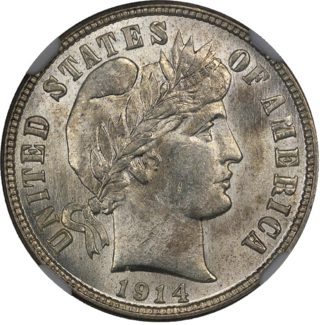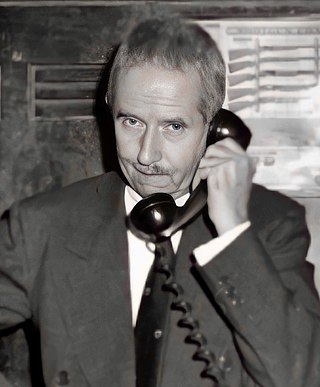
Great Falls is the third most populous city in the U.S. state of Montana and the county seat of Cascade County. The population was 60,442 according to the 2020 census. The city covers an area of 22.9 square miles (59 km2) and is the principal city of the Great Falls, Montana, Metropolitan Statistical Area, which encompasses all of Cascade County. The Great Falls MSA's population stood at 84,414 in the 2020 census.

E pluribus unum – Latin for "Out of many, one" – is a traditional motto of the United States, appearing on the Great Seal along with Annuit cœptis and Novus ordo seclorum which appear on the reverse of the Great Seal; its inclusion on the seal was suggested by Pierre Eugene du Simitiere and approved in an act of the Congress of the Confederation in 1782. While its status as national motto was for many years unofficial, E pluribus unum was still considered the de facto motto of the United States from its early history. Eventually, the U.S. Congress passed an act in 1956, adopting "In God We Trust" as the official motto.

The dollar coin is a United States coin with a face value of one United States dollar. Dollar coins have been minted in the United States in gold, silver, and base metal versions. Dollar coins were first minted in the United States in 1794.

The Eisenhower dollar is a one-dollar coin issued by the United States Mint from 1971 to 1978; it was the first coin of that denomination issued by the Mint since the Peace dollar series ended in 1935. The coin depicts President Dwight D. Eisenhower on the obverse, and a stylized image honoring the 1969 Apollo 11 Moon mission on the reverse. Both sides were designed by Frank Gasparro, with the reverse based on the mission patch designed by astronaut Michael Collins. It is the only large-size U.S. dollar coin whose circulation strikes contained no silver.

J Harlen Bretz was an American geologist, best known for his research that led to the acceptance of the Missoula Floods and for his work on caves.

The American Silver Eagle is the official silver bullion coin of the United States. It was first released by the United States Mint on November 24, 1986, and portrays the Goddess of Liberty in a design by Adolph A. Weinman that was originally used on the Walking Liberty half dollar from 1916 to 1947.

Great Falls International Airport is a public/military airport in city limits three miles southwest of central Great Falls in Cascade County, Montana, United States. The airport has also been called Great Falls Municipal Airport.

The Peace dollar is a United States dollar coin minted for circulation from 1921 to 1928 and 1934 to 1935, and beginning again for collectors in 2021. Designed by Anthony de Francisci, the coin was the result of a competition to find designs emblematic of peace. Its obverse represents the head and neck of the Goddess of Liberty in profile, and the reverse depicts a bald eagle at rest clutching an olive branch, with the legend "Peace". It was the last United States dollar coin to be struck for circulation in silver.

The Walking Liberty half dollar is a silver 50-cent piece or half dollar coin that was issued by the United States Mint from 1916 to 1947; it was designed by Adolph A. Weinman, a well-known sculptor and engraver.

The Barber coinage consists of a dime, quarter, and half dollar designed by United States Bureau of the Mint Chief Engraver Charles E. Barber. They were minted between 1892 and 1916, though no half dollars were struck in the final year of the series.
C. M. Russell Museum Complex is an art museum located in the city of Great Falls, Montana, in the United States. The museum's primary function is to display the artwork of Great Falls "cowboy artist" Charles Marion Russell, for whom the museum is named. The museum also displays illustrated letters by Russell, work materials used by him, and other items which help visitors understand the life and working habits of Russell. In addition, the museum displays original 19th, 20th, and 21st century art depicting the American Old West and the flora, fauna, and landscapes of the American West. In 2009, the Wall Street Journal called the institution "one of America's premier Western art museums." Located on the museum property is Russell's log cabin studio, as well as his two-story wood-frame home. The house and log cabin studio were designated a National Historic Landmark in 1965, and added to the National Register of Historic Places in 1966. In 1976, the listing boundaries were amended to account for moving the house.

Black Eagle Dam is a hydroelectric gravity weir dam located on the Missouri River in the city of Great Falls, Montana. The first dam on the site, built and opened in 1890, was a timber-and-rock crib dam. This structure was the first hydroelectric dam built in Montana and the first built on the Missouri River. The dam helped give the city of Great Falls the nickname "The Electric City." A second dam, built of concrete in 1926 and opened in 1927, replaced the first dam, which was not removed and lies submerged in the reservoir. Almost unchanged since 1926, the dam is 782 feet (238 m) long and 34.5 feet (10.5 m) high, and its powerhouse contains three turbines capable of generating seven megawatts (MW) of power each. The maximum power output of the dam is 18 MW. Montana Power Company built the second dam, PPL Corporation purchased it in 1997 and sold it to NorthWestern Corporation in 2014. The reservoir behind the dam has no official name, but was called the Long Pool for many years. The reservoir is about 2 miles (3.2 km) long, and has a storage capacity of 1,710 acre-feet (2,110,000 m3) to 1,820 acre-feet (2,240,000 m3) of water.
The 1980 Montana Grizzlies football team represented the University of Montana in the 1980 NCAA Division I-AA football season as a member of the Big Sky Conference. The Grizzlies were led by first-year head coach Larry Donovan, played their home games at Dornblaser Field and finished the season with a record of three wins and seven losses.

The Arvon Block is a historic building located in Great Falls, Montana, in the United States. Constructed from 1889 to 1890 by wealthy rancher and city booster Robert Vaughn in the Western Commercial architectural style, the buildings are some of the oldest in the city of Great Falls. They originally functioned as a hotel, and served passengers arriving in the city via train on the Montana Central Railway. The single structure was later divided internally into three buildings, now housing a boutique hotel, and an Irish-themed pub and restaurant. The Arvon Block was added to the National Register of Historic Places on September 26, 1991.

LaVere Redfield was an American financier and multi-millionaire. Redfield made his fortune in purchasing oil land in Los Angeles, investing in stocks, and buying property at tax sales during the Great Depression. When he was robbed in 1952, the multi-million dollar burglary was one of the largest ever recorded. The investigation revealed a hoard of 270,000 silver Morgan dollars and postage stamps behind a false wall in his basement. After his death in 1974, his heirs found 407,000 more silver dollars hidden in his garage and home.

The Redfield Hoard was LaVere Redfield's collection of 407,000 silver Morgan and Peace dollars. The hoard was discovered in Reno, Nevada, at the home of LaVere Redfield after his death in 1974.

Zollie Kelman was an American businessman who operated gaming machines in Great Falls, Montana. He founded the American Music Company in the 1940s. He was a coin collector and his coin collection became known as the Great Montana Collection.

The Black Eagle is a type of one-dollar silver certificate produced in 1899 in the United States. The note measured 7.38 in (187 mm) by 3.18 in (81 mm); it was of the large-size variety of bank-notes issued by the United States. The note featured a black eagle with its wings spread. The note was also referred to as "Eagle of the Capitol", because the United States Capitol is visible behind the eagle. The note was issued from 1899–1923 and the Bureau of Engraving and Printing (BEP) printed 3,604,239,600 black eagles. Because of the large size, the note is colloquially referred to as a "horseblanket".


















